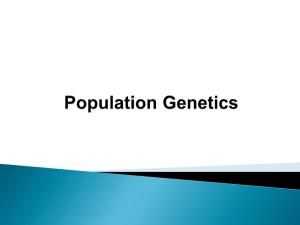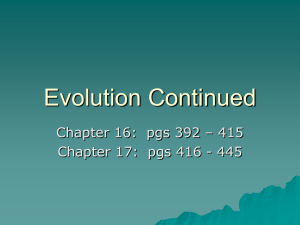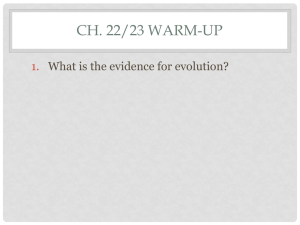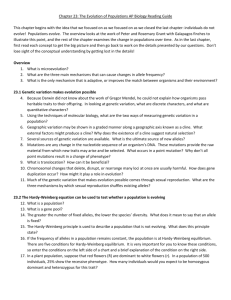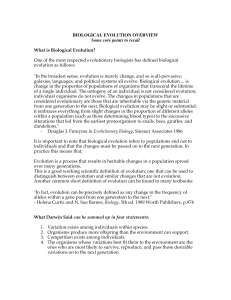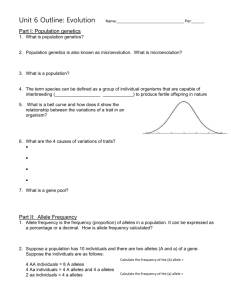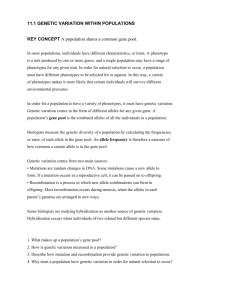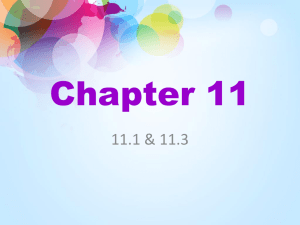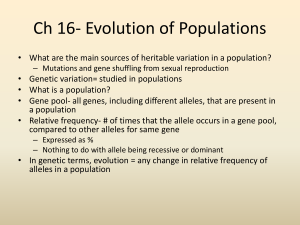Evolutionary Mechanisms Worksheet: SBI3U Biology
advertisement
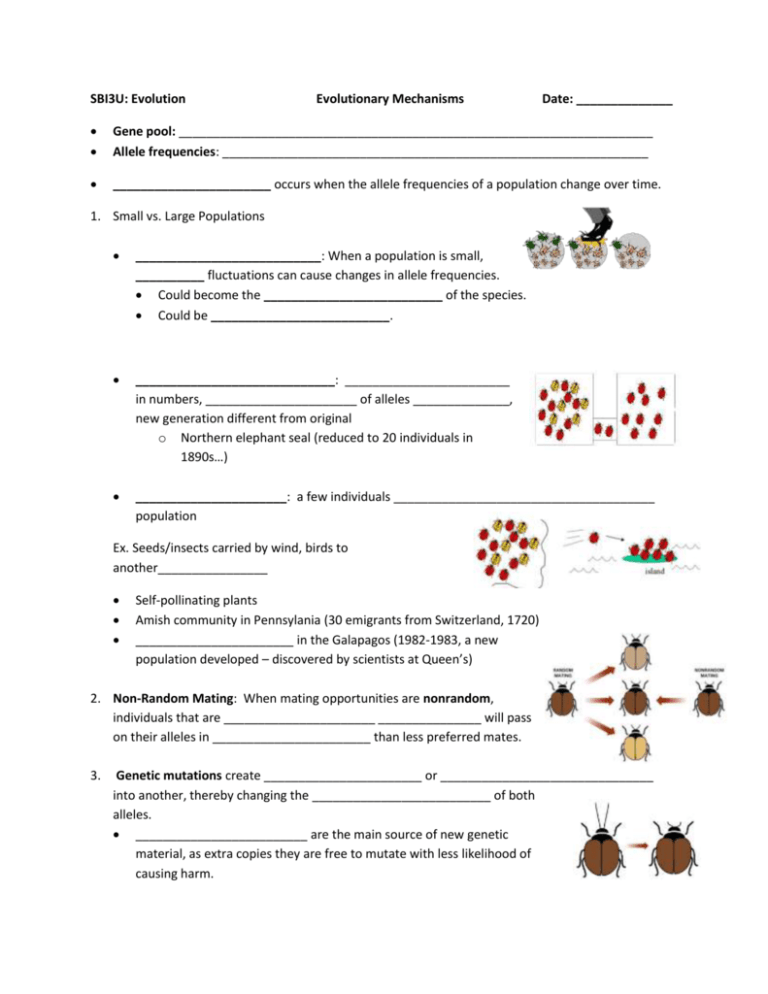
SBI3U: Evolution Evolutionary Mechanisms Date: ______________ Gene pool: _____________________________________________________________________ Allele frequencies: ______________________________________________________________ _______________________ occurs when the allele frequencies of a population change over time. 1. Small vs. Large Populations ___________________________: When a population is small, __________ fluctuations can cause changes in allele frequencies. Could become the __________________________ of the species. Could be __________________________. _____________________________: ________________________ in numbers, ______________________ of alleles ______________, new generation different from original o Northern elephant seal (reduced to 20 individuals in 1890s…) ______________________: a few individuals ______________________________________ population Ex. Seeds/insects carried by wind, birds to another________________ Self-pollinating plants Amish community in Pennsylania (30 emigrants from Switzerland, 1720) _______________________ in the Galapagos (1982-1983, a new population developed – discovered by scientists at Queen’s) 2. Non-Random Mating: When mating opportunities are nonrandom, individuals that are ______________________ _______________ will pass on their alleles in _______________________ than less preferred mates. 3. Genetic mutations create _______________________ or _______________________________ into another, thereby changing the __________________________ of both alleles. _________________________ are the main source of new genetic material, as extra copies they are free to mutate with less likelihood of causing harm. Mutations occur as 1 in 10000 in a small genome (bacteria) to about 1 or more per gamete in larger genome. 4. Migration: When individuals migrate, this ___________________________________ of both the population it __________and the one it ____________. ___________________: movement of alleles from one population to another. Tends to _______________ differences between populations 5. When natural selection occurs, individuals with certain alleles have ____________________ _____________________________than others do, thereby ____________________the relative frequency of their alleles in the next generation. Harmful genes selected ________________ Useful genes _______________ Homework: 1) Define evolution using the term allele frequency 2) What is the difference between genetic drift and gene flow? Give an example of each. 3) “The northern elephant seal population was reduced by overhunting to 20 individuals in the 1890s. Although the population had rebounded to over 30 000 individuals by 1974, genetic testing revealed limited genetic variation amoung the population.” What evolutionary mechanism is this an example of? Explain why the seal population in 1974 lacked genetic variation. 4) Give three examples of species that may produce founder populations. 5) During the fall migration, several Canada geese stop over at a river near a good food source and then nest there the following spring. Because of the abundance of food, this population of geese stops migrating. What effects, both immediate and long-term, might this situation have on the gene pools of original and founder populations? 6) Which evolutionary mechanism results in new genetic information?
